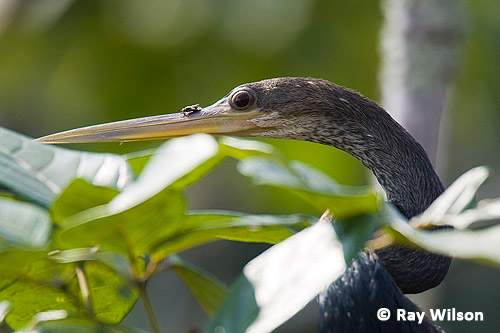
- Home
- Workshops / Tours
- Diary / Blog
- Galleries
- Foreign Trips
- Tasmania 2016
- NE Queensland 2016
- Western Alps 2016
- NE Spain 2016
- Australia's Wet Tropics 2015
- Australia's Top End 2015
- SW Australia 2015
- Switzerland 2015
- Andalucia 2015
- Belize 2015
- Australia 2014
- Switzerland 2014
- Belize 2014
- Bahama Islands 2014
- Switzerland 2013
- Ecuador 2012-2013
- Florida 2011-2012
- Vancouver Island 2011
- Australia 2010
- Peru 2008
- Bulgaria 2007
- Lesvos 2006
- California 2006
- New Zealand 2005
- Extremadura 2005
- Goa, India 2004
- The Gambia 2003
Southern Peru
25th November-14th December 2008
Tambopata: Explorer's Inn
Our next stop was the lowland rainforest enclosed within the Tambopata National Reserve. The Tambopata River is a tributary of the Amazon (eventually!) via the Rio Madre de Dios and the Rio Madeira, but even this far up river it is quite wide.
We flew into Puerto Maldonado (a 1hour flight from Cuzco) and were picked up at the airport by the staff of the Explorer's Inn where we would be staying for the next 5 days. From the airport it was an hour's drive to the wharf then a further 2 hours upriver by a motorised canoe before finally reaching the lodge.
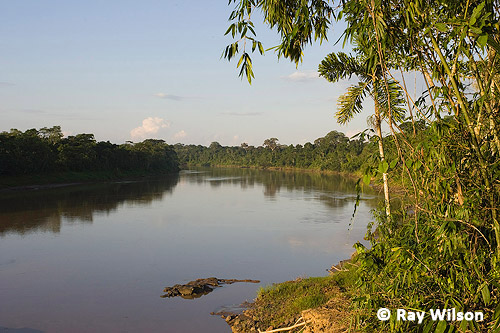
Tambopata River
There is a huge diversity of wildlife in the area immediately surrounding the Explorer's Inn, with over 600 species of bird, 1400+ butterflies, 140 dragonflies and numerous other creatures, there is no shortage of things to see without having to go far!

Yellow-rumped Cacique (Cacicus cela)
A noisy colony of Yellow-rumped Caciques were nesting in the palm trees in front of the buildings.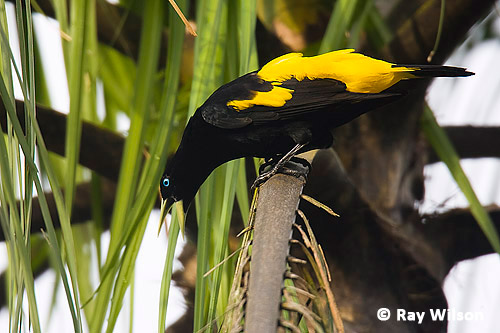
Yellow-rumped Cacique (Cacicus cela)
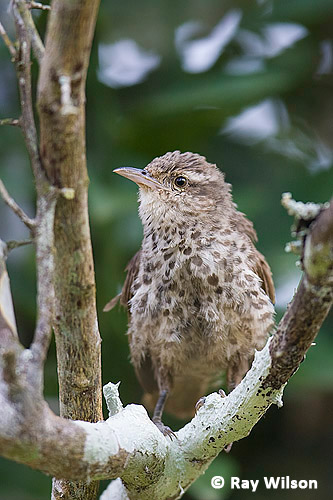 |
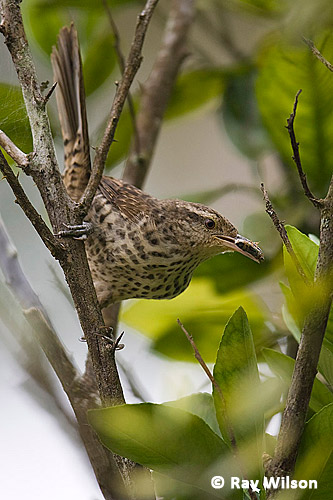 |
Thrush-like Wren (Campylorhynchus turdinus)
Thrush-like Wren were also busy with their nesting duties in a small tree beside the kitchens.
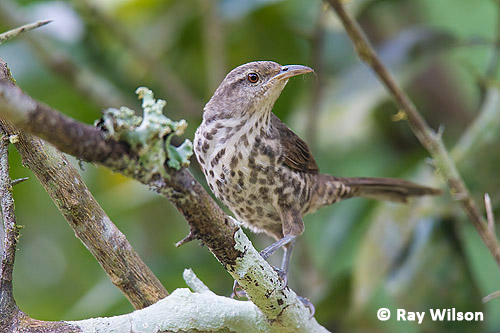
Thrush-like Wren (Campylorhynchus turdinus)
Although superficially similar to kingfishers, Jacamars belong to an exclusively neotropical family comprising 18 species.
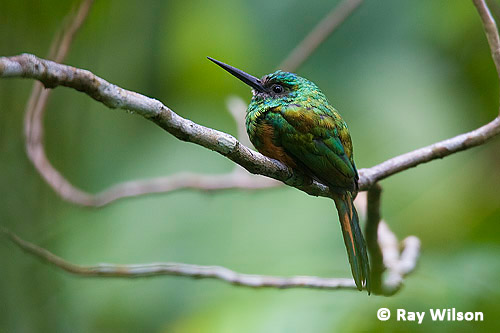
Bluish-fronted Jacamar (Galbula cyanescens)
Streaked Flycatcher is one of the larger and more distinctive members of the Tyrant Flycatcher family, a huge New World family containing 429 species, many of which are pretty non-descript and hard to identify.
 |
 |
Streaked Flycatcher (Myiodynastes maculatus)
Another member of the Tyrannidae commonly found around the buildings is the Piratic Flycatcher (below left).
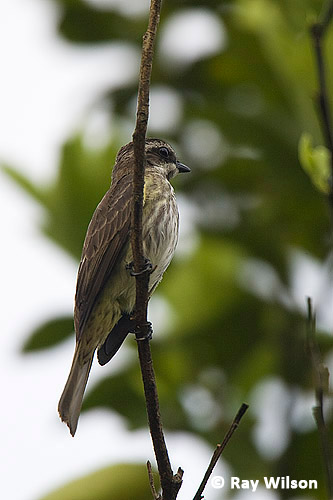 Piratic Flycatcher (Legatus leucophaius) |
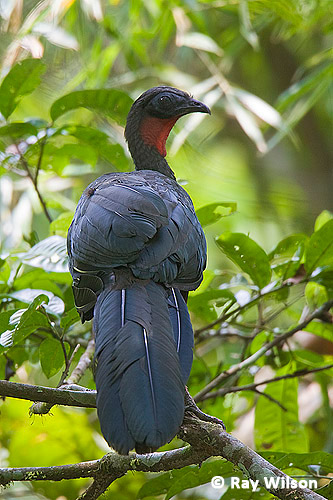 Spix's Guan (Penelope jacquacu) |
Spix's Guan (above right) is locally known as the Jungle Turkey and, similar to the Andean Guan, is heavily hunted in unprotected areas.
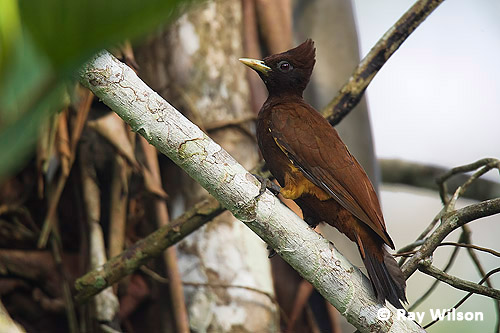
Chestnut Woodpecker (Celeus elegans)
A rehabilitated Blue-and-Yellow Macaw, rescued from the pet trade, is often present near the lodge and allows good opportunities for photography. I saw a total of 4 species of Macaw in the cleared area around the buildings during my stay, although most of them were in the tree tops and too distant for photography.
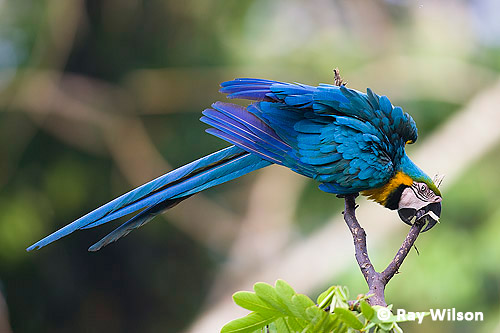
Blue-and-Yellow Macaw (Ara ararauna)
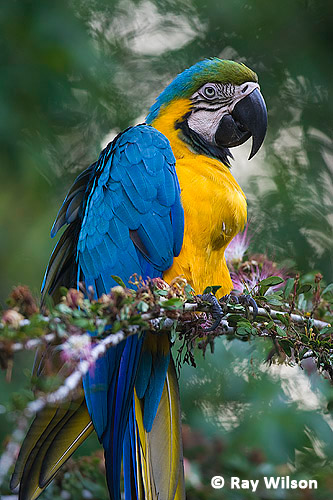 |
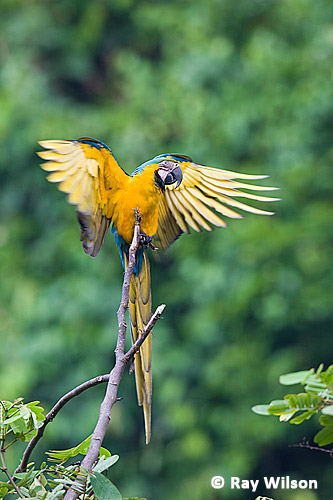 |
Blue-and-Yellow Macaw (Ara ararauna)
The most common raptor around the lodge is the Plumbeous Kite with adult and juvenile birds being seen every day.

adult Pumbeous Kite (Ictinia plumbea)
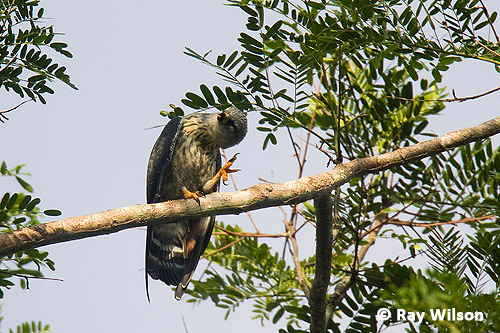
immature Pumbeous Kite (Ictinia plumbea)
By imitating its call, Christian (one of the resident guides) was able to bring a Black-tailed Trogon close enought for a good, clear view.
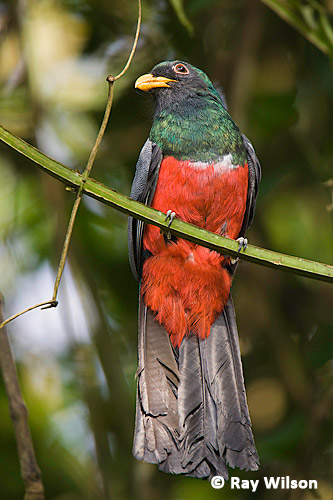 Black-tailed Trogon (Trogon melanurus) |
 Red Howler Monkey (Alouatta seniculus) |
Apart from the birds, several species of monkey are commonly seen close to the lodge.
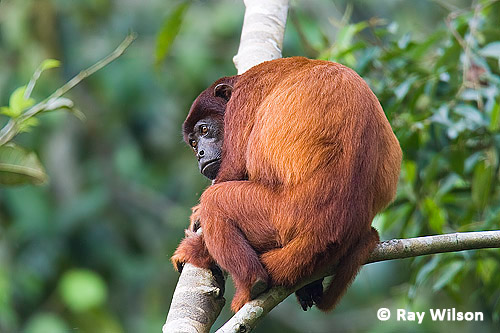
Red Howler Monkey (Alouatta seniculus)
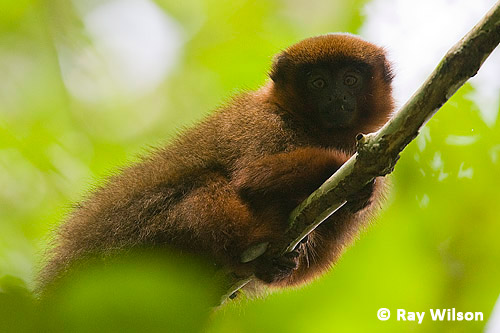
Dusky Titi Monkey (Callicebus cupreus)
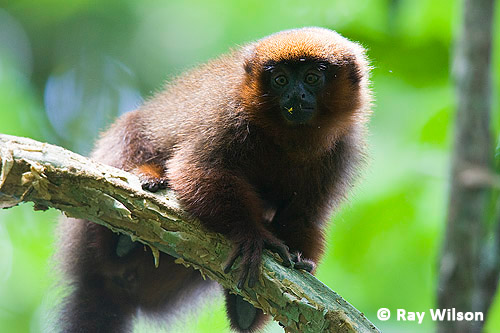
Dusky Titi Monkey (Callicebus cupreus)
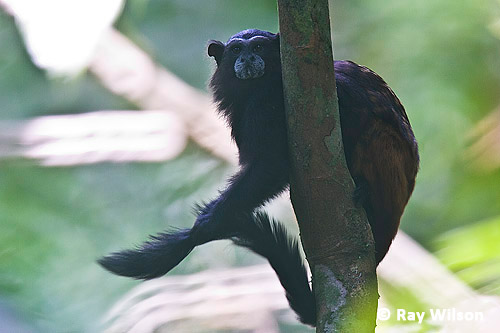
Saddle-backed Tamarin (Saguinus fuscicollis)
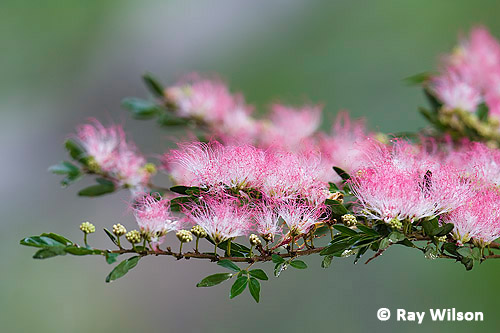
At daybreak one morning, we walked out to the Cocococha Oxbow Lake (about 5km each way). Here we got in a small canoe and Christian paddled us around the lake for a couple of hours.
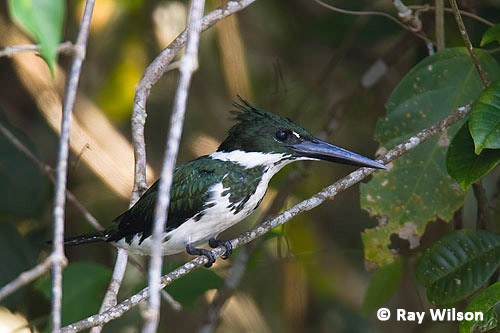
Amazon Kingfisher (Chloroceryle amazona)
A female Amazon Kingfisher was lurking in the lakeside undergrowth, while White-winged Swallows were fairly common.
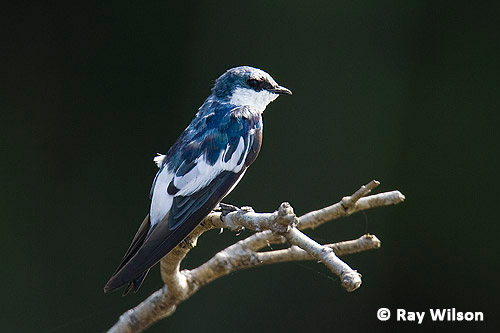
White-winged Swallow (Tachycineta albiventer)
The star attraction of the lake, at least for me, was the Hoatzin. These strange, prehistoric-looking birds are very common and can be seen perched near the water or clumsily moving around the trees in their family groups.
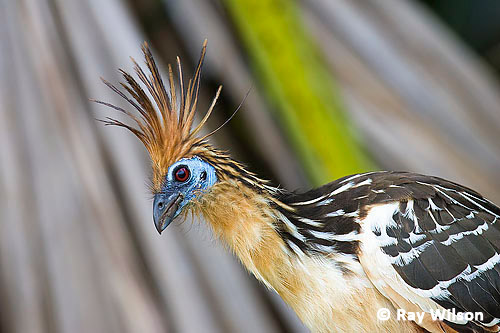
Hoatzin (Opisthocomus hoazin)
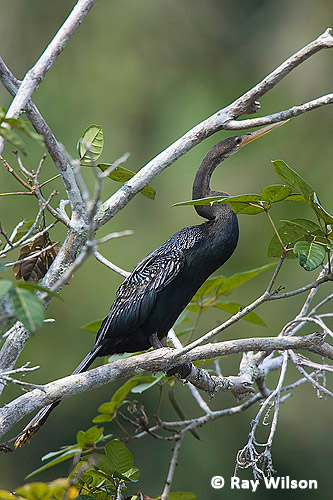 Anhinga |
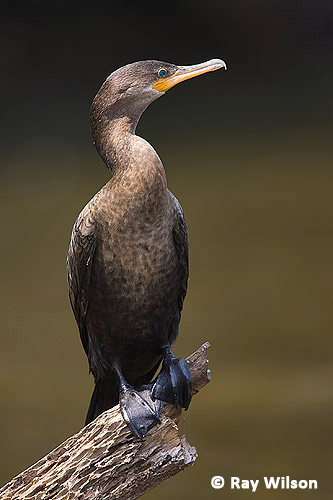 immature Neotropical Cormorant |
Anhinga (Anhinga anhinga) with a Tabanid Fly on its bill
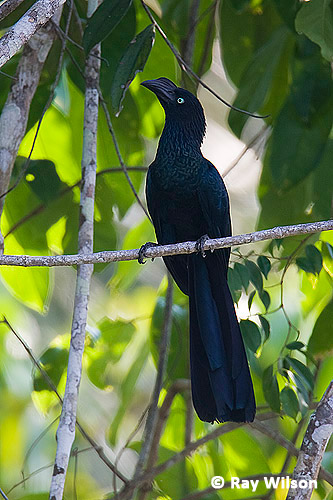
Greater Ani (Crotophaga major)
On our way back from the lake we heard the sound of approaching thunder and had to pick up the pace to make it back to the lodge before the deluge started. We made it with literally only 30 seconds to spare! Amazingly, that 1 hour storm was the only rain we saw in our 5 day stay. Not bad considering December is the start of the rainy season!
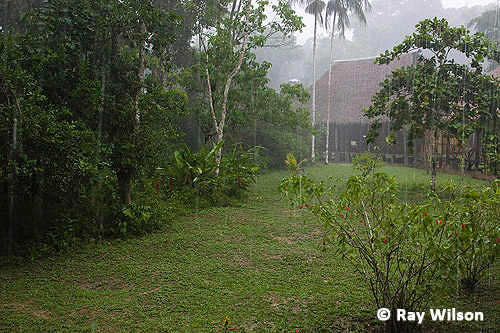
Tropical downpour at Tambopata Lodge
One good thing about the rain is it vastly increases the frog activity, and that night we managed to find several species.
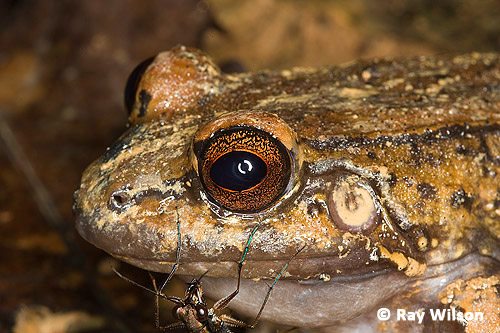
unidentified frog sp.
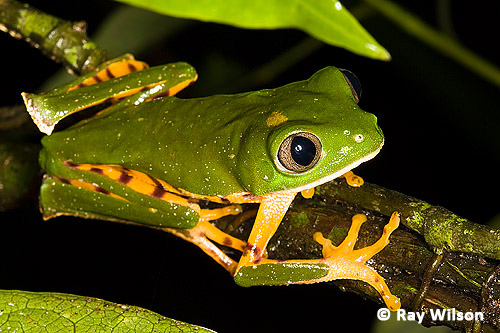
Barred Monkey Frog (Phyllomedusa tomopterna)
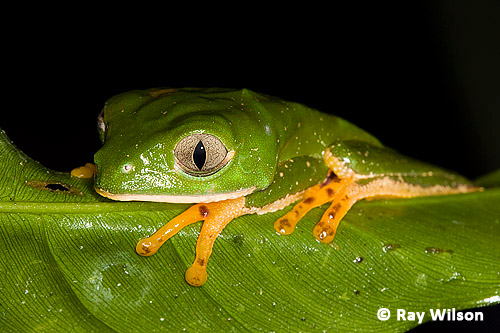
Barred Monkey Frog (Phyllomedusa tomopterna)
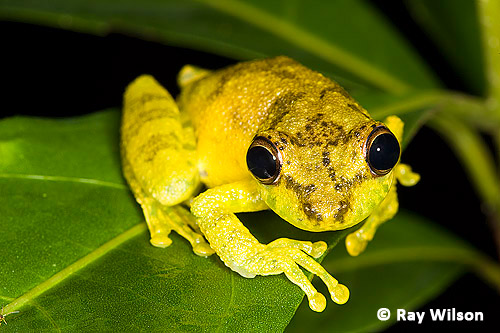
Least Treefrog (Hyla minuta)
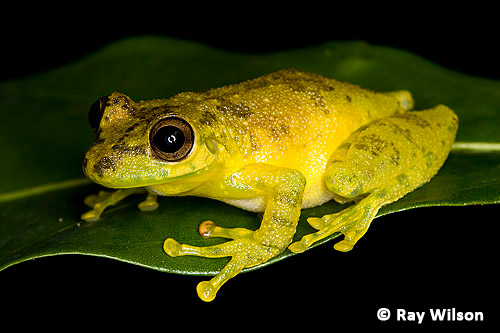
Least Treefrog (Hyla minuta)
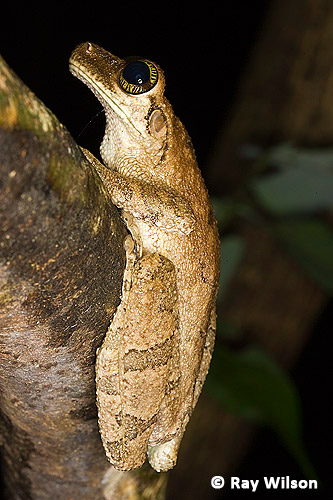
Giant Broad-headed Treefrog |
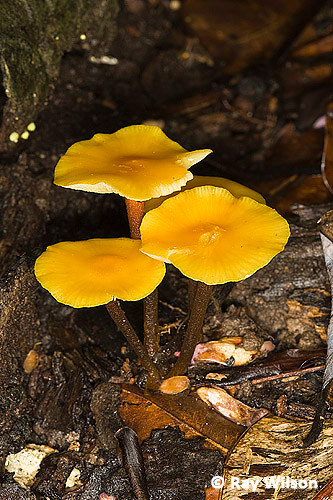
|
Near the end of our little night walk, Christian disappeared into the bushes, emerging shortly after and beckoning on us to follow him. Less than 10m into the forest a Ringed Antpipit was sitting on a branch at eye level: the same branch it sits on every night...and it had no intention of moving for anyone. It didn't even flinch when I zapped it with my flashgun at a distance of only 50cm (I had to get that close as the only lens I had with me was the 100mm macro)!
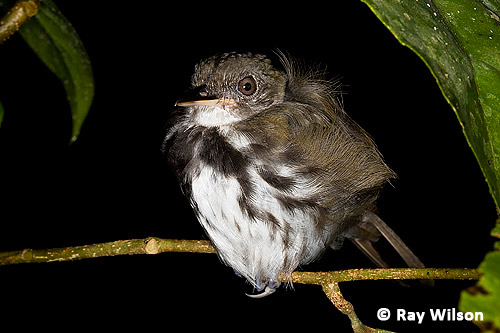
Ringed Antpipit (Corythopis torquatus)
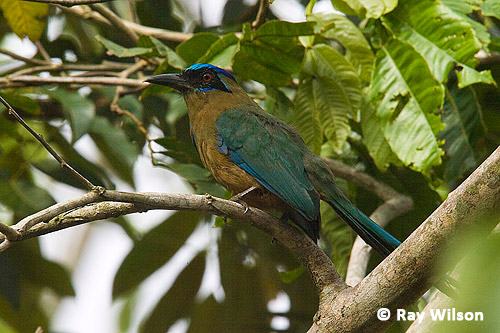
Blue-crowned Motmot (Momotus momota)
Ray Wilson owns the copyright of all images on this site.
They may not be used or copied in any form without prior written permission.
raywilsonphotography@googlemail.com
